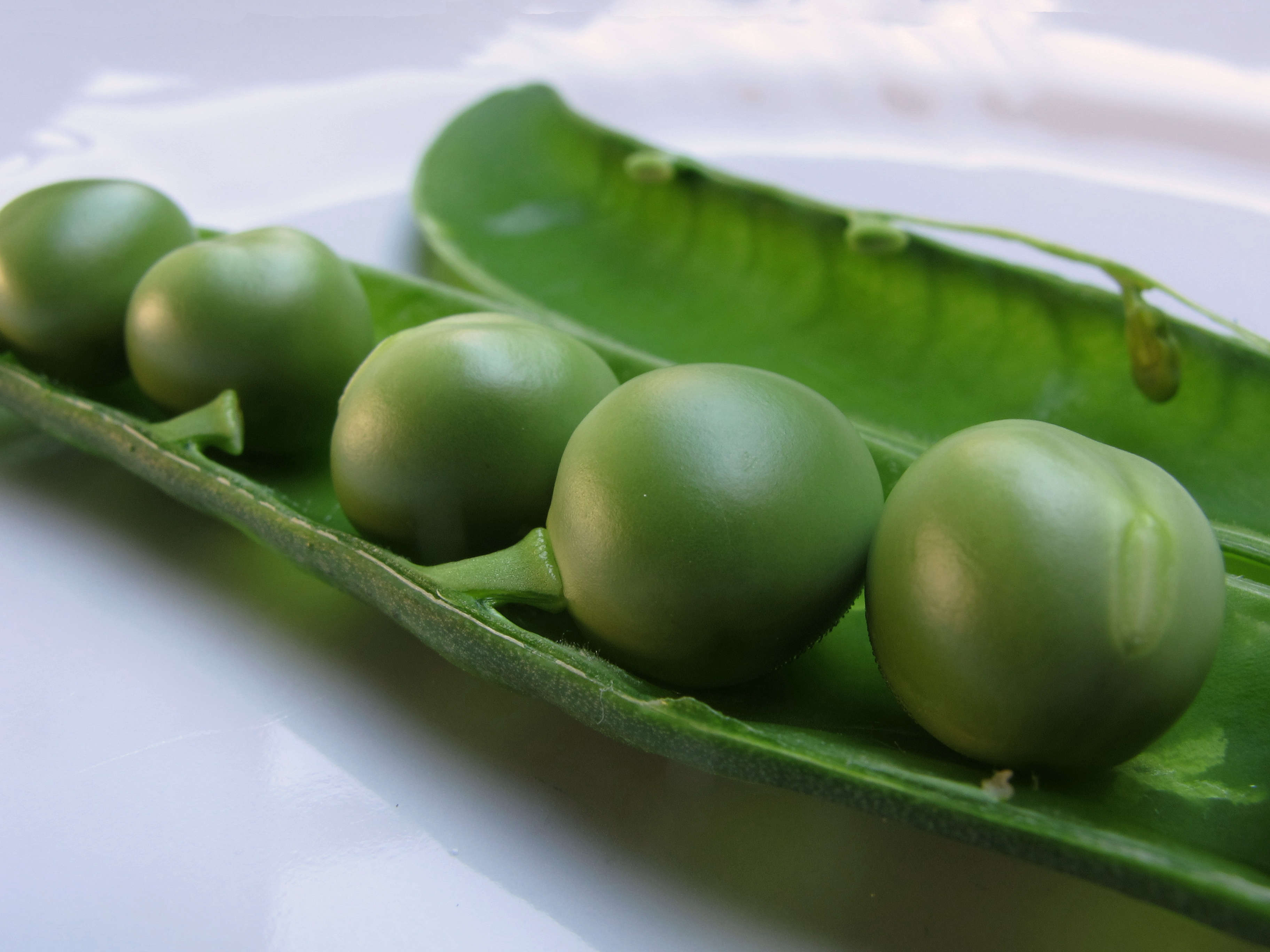Peas, Pisum sativum: “A Fashion, A Fury”
In 1692, two French aristocrats proclaimed fresh peas “a fashion, a fury” and the delicacy hasn’t diminished in popularity during successive centuries.
No other snack beats the sweet crunch of a pea snapped off the vine in the field. There’s a cultivar of pea to suit every need. For field snacking, try sugar and snap pea varieties; all other cultivars should be shelled or cooked for best flavors. Dwarf or bush varieties suit a weekend gardener, but vining types (which require trellises) will yield more peas.
Above: Photograph by Forest and Kim Starr via Flickr.
Pea vines create a stunning backdrop, and fill a garden with light green vines and beautiful white blossoms in the spring. Creating a DIY pea trellis can make artists out of gardeners; tie together sharpened sticks from your yard or use fence panels, old fencing, wire netting, or spare copper plumbing parts. If you plant peas on either side of the trellis, you can maximize the space and let your trellis do double duty. Since peas grow best in the cool, wet parts of the season, be careful not to overwater. The soil underneath the closely spaced plants can become moldy if too wet.
Above: Photograph by Jacinta Iluch Valero via Flickr.
Cheat Sheet
- An excellent choice for intercropping with radishes or lettuce.
- Peas accompany all plants in the garden, except for alliums such as onions or garlic.
- Peas fix nitrogen in soil, so plant a heavy feeder such as cucumbers, squash, or tomatoes after you harvest them.
- Picking peas is an art, not a science, and therefore a task for the Goldilocks among us. You want the pod to feel firm with a little give around each pea. Look for not too big, not too flat, and you’ll reap sweet but not starchy peas.
Above: Photograph by Free Use Photos via Flickr.
Keep It Alive
- Peas thrive in full sun or partial shade.
- Peas like well-drained soil; water evenly until sprouted. Resist over-watering as they grow (the vines shade the ground, making mold or rot a threat). Irrigate more once budding peas appear.
- Peas perform best outdoors, and can be grown on patios/containers.
- Peas are a cool-weather crop. Plant them in early spring and again in early fall.
Above: Photograph by Solylunafamilia via Flickr.
Stuck in a city apartment? Try planting a flat of peas in a deep window box or other large container. You won’t get pea pods, but sow thickly and simply harvest the pea shoots for salads. Don’t be surprised if your neighbors start popping over when they see your greenery.
Planning your spring Edible Garden? See our plant guides for information about Tarragon, Arugula, and Parsley.
Finally, get more ideas on how to successfully plant, grow, and care for peas with our Peas: A Field Guide.
Interested in other edible plants for your garden? Get more ideas on how to plant, grow, and care for various edible plants (including flowers, herbs and vegetables) with our Edible Plants: A Field Guide.












Have a Question or Comment About This Post?
Join the conversation